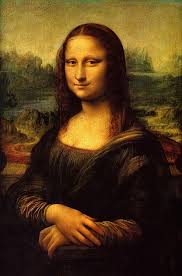Understanding the Mona Lisa: An Icon of Art and Culture

Introduction
The Mona Lisa, painted by Leonardo da Vinci in the early 16th century, is one of the most famous works of art in the world. Its enigmatic expression and masterful techniques have captivated audiences for centuries, making it a symbol of the Renaissance and a focal point of cultural discussions. The painting’s relevance extends beyond mere aesthetics; it also raises questions about identity, beauty, and the role of art in society.
History and Significance
Completed around 1503-1506 and later touched up until 1517, the Mona Lisa portrays Lisa Gherardini, the wife of Florentine merchant Francesco del Giocondo. The use of sfumato, a technique that creates a soft transition between colors and tones, is a hallmark of Leonardo’s style that enhances the painting’s mysterious allure. Its fame escalated dramatically in the early 20th century when it was stolen from the Louvre in 1911, leading to a massive media frenzy and a new level of public interest.
Today, the Mona Lisa resides in the Louvre Museum in Paris, where it continues to draw millions of visitors each year. According to the Louvre, the painting is viewed by over 9 million people annually, making it one of the museum’s most prized attractions. The painting’s popularity has been further solidified through countless reproductions and references in popular culture.
Current Events and Cultural Impact
In recent years, the Mona Lisa has remained a point of discussion in art circles and academia, particularly regarding its restoration and conservation. Experts have emphasized the importance of preserving such iconic artworks for future generations. Additionally, exhibitions that include the Mona Lisa have sparked global tourism, with many people travelling specifically to see da Vinci’s masterpiece.
Conclusion
The Mona Lisa is not just a painting; it is a cultural landmark that has evolved with the times, constantly reminding us of the profound connection between art and society. As discussions around art conservation and cultural heritage continue, the significance of the Mona Lisa endures, inspiring future generations of artists and art lovers alike. The painting’s ability to intrigue and resonate with viewers guarantees its place in the annals of art history for years to come.









